Published 18 September 2019 ● Last Updated on 16 July 2020
Is there any among us who has not already seen Goa from a tourist’s lens? Be it in person or via pictures of another, we have all ooh-ed at its sunny sands and aah-ed at its vibrant waters. But of course, the natural beauty of any coast does not lie in its tanning quotient and nearness to food shacks. Get a glimpse into wondrous eco-experiences that even an over-run destination can offer in this travelogue by Aditi Seshadri, co-founder of Unlock Impact and resident of Goa, as she goes on a dolphin-watching trip in this city.
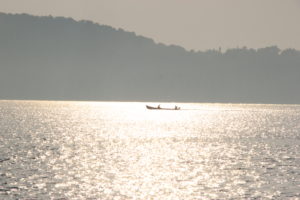
On a muggy Goa morning, we are speeding out onto the grey waters of the Arabian Sea, leaving behind an already crowded shore, teeming with boats, boatmen, tourists and vendors. Cutting through the waves towards the open sea, we spot some of the famous and infamous sights of Goa – the Chapora fort, built in the 17th century by then ruler Adil Shah to Kingfisher Villa, the 20th century showpiece built by absconding tycoon Vijay Mallya.
A few kilometres from the shore, our boatman cuts the motor and we are bobbing gently. Despite the cluster of boats around us, we seem to exist in a tiny oasis of calm. The minutes tick away and silence descends on the group as we slowly but surely tune in to the rhythm of the sea, breathing in ocean air, listening to lapping waves, watching swooping seagulls.
And then, there are shadows in the water, excited muttering and pointing, and finally we spy – slicing through the waves, first a couple of fins, revealing grey bodies and the distinctive elongated snouts all the way to the tail fins, as two dolphins leap gracefully through the air, arching in the sunlight for a few seconds and then submerging back into the ocean. In a few exhilarating seconds, the ocean has revealed a glimpse of the life that exists within, and that morning we are lucky enough to have this experience repeat itself, as we spend the next half hour watching a school of the Indian Ocean humpback dolphins making their way out for the day.
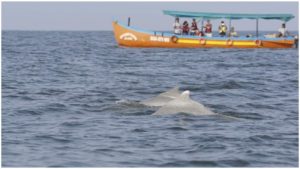
Wildlife watching is always a goosebump-inducing experience and this was no less, thanks to the efforts of Terra Conscious, a feisty responsible travel enterprise based out of Goa (India’s tiniest state located on the western coast), run by Puja Mitra and Roshan Gonsalves. Puja is a conservationist who has worked at organisations like the Federation of Indian Animal Protection Organisations and WWF (World Wide Fund) which led her to oceanic conservation projects, particularly to do with endangered humpback dolphins found on the Indian coast. Roshan is a professional diver and marine ecology specialist who has combined his interests to create underwater learning experiences for others. The couple’s intent is to build awareness and promote marine conservation while working with local communities to deliver responsible travel experiences for the hordes of tourists who come to Goa, pegged at around 8 million in 2018.
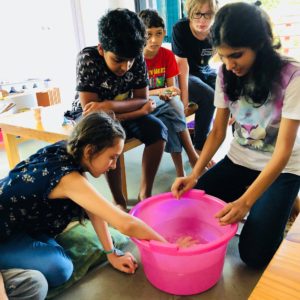
Globally, wildlife watching is a multi-billion-dollar industry. The annual shark diving industry in Fiji is worth $42 million, $18 million in Palau and $38 million in the Maldives. Whale watching globally is worth about $2 billion a year. A study conducted by the US Fish and Wildlife Service found that birdwatchers contributed about $32 billion annually to the US economy. If done right, wildlife watching can help to support conservation efforts and teach create awareness about biodiversity and climate change.
In Goa, it is typically the fisher communities that have taken to operating tourist boat rides or running motorsports to survive and supplement their incomes at a time when traditional occupations like fishing are becoming unviable. In a tourism hotspot like Goa, this ends up in a competitive space with each operator, usually lacking the training needed to run the viewings mindfully, ready to offer any experience that a tourist is looking for – including a dolphin sighting for as little as INR 300 – threatening both marine life and the livelihood of the community that lives off it.
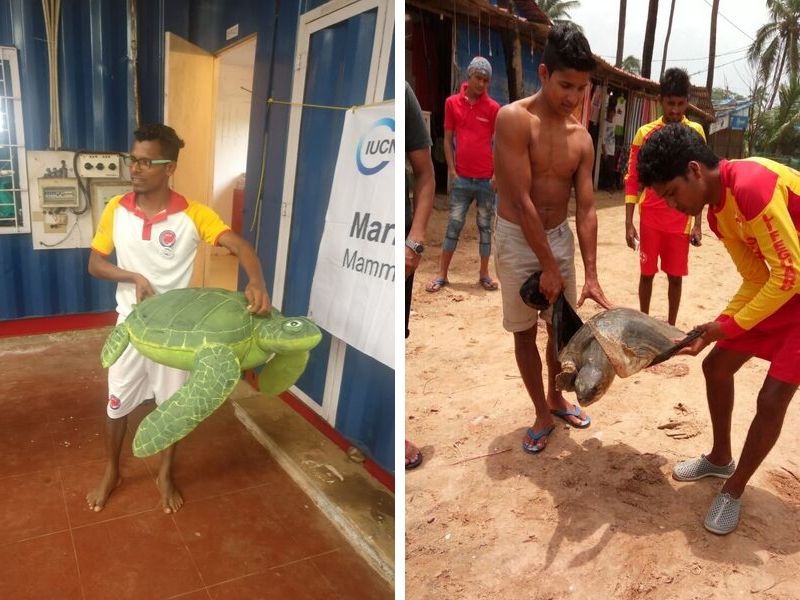
Over one-third of the world’s population lives within 100 km of an oceanic coast, and the degradation of coastal and marine ecosystems threatens the physical, economic and food security of local communities. The ocean is the Earth’s biggest ecosystem and climate change weakens its ability to provide critical services such as food, carbon storage and oxygen generation. Globally, the conversation about the need to protect our oceans has been gaining steam but the average individual is still fairly disconnected from their marine heritage. This is the gap that enterprises like Terra Conscious are trying to address.
On this particular day in December, the group consists of me, a friend and my two nieces, then aged 10 and 13. We start the morning early with breakfast and an interactive presentation (which includes a dolphin mascot) delivered by Puja that talks about the life, habits and characteristics of Humpback dolphins (Did you know – Humpback dolphins inhabit waters shallower than 20m which is why they can be found along the coast and which is what also makes them very susceptible to coastal pollution and has turned them into an ‘endangered’ species). The session – covering marine wildlife, the need for conservation and the status of the oceans today – is an eye-opener not just for the two school-going kids, but the adults too.
A short drive takes us to the jetty in Sinquerim, one of Goa’s many beaches, where Puja has her boat operator on standby. We are given life jackets, water and snacks for the ride and then we head off. Our boatman is friendly but quiet, letting the experience do the talking. Out at sea, we right away notice one way in which our boat is different – while the other boats are zooming around different areas, our boatman picks a spot, cuts the motor and we stay put. Dolphins get scared if you agitate the water, plus, it’s bad for the corals here, he tells us.
The Terra Conscious model involves working with a group of boat operators from the community who have been trained in adhering to wildlife sighting guidelines and have knowledge of the biodiversity. With Terra Conscious bringing in the responsible audience, it takes the pressure off the boat operators to hustle in large numbers and guarantee dolphin sightings, which accomplishes three things – one, a more dependable source of livelihood for the boat operators; two, generating awareness with tourists and the community; and ultimately, creating a better environment for the dolphins to thrive in.
Initiatives like this have been springing up around the world –Responsible Travel, Social Tours in Nepal; Blue Ventures, Wild Coast, The Folk Tales and Ecosphere in Spiti Valley in the Himalayas; Native Folks, Broken Compass, Nature’s Nest and Canopy and Aangan in Goa. The models are varied but they prove that change can happen with community and conservation at its heart.
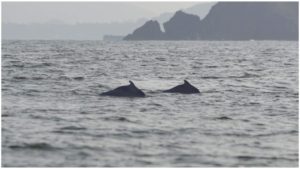
That day, we spot about 15 dolphins – these large, gentle, gracious creatures who offer us a glimpse of a whole other world that co-exists with us. Our trip lasts only a few hours, but I now have an experience and a memory for this lifetime.
Aditi Seshadri is the co-founder of Unlock Impact, a social sector consulting firm that helps design and deliver CSR and business strategies, impact assessment and storytelling.
A communications and marketing expert with 15+ years of experience, she spent the first part of her career as a journalist at leading publications such as India Today before switching gears and working with impact organisations to help develop and execute growth strategies. She loves to read, dabbles in pottery and can be found on her days off on the sunny beaches of Goa in India.
Related articles:
EcoTravel | Ladakh, a picture perfect destination for eco minded souls



0 Comments